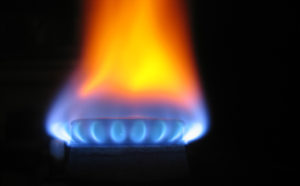 Natural gas fell on Friday as Arctic temperatures over the Midwest and Northeast began to fade, giving way to a warmer weekend. However, the energy source was still set for a sizable weekly gain, poised for more upside next week, amid forecasts for new cold blasts.
Natural gas fell on Friday as Arctic temperatures over the Midwest and Northeast began to fade, giving way to a warmer weekend. However, the energy source was still set for a sizable weekly gain, poised for more upside next week, amid forecasts for new cold blasts.
Natural gas for delivery in December fell by 2.52% to $4.376 per million British thermal units by 10:33 GMT. Prices held in a daily range between $4.532, the highest since November 10th, and $4.375 during the day. The energy source surged 2.7% on Thursday to $4.489 and is up 8.9% so far this week.
According to NatGasWeather.com, national natural gas demand over the next seven days will be moderate compared to normal, with a neutral to slightly-colder weather trend for the November 28 – December 4 period.
Arctic temperatures across the Midwest and Northeast have started to fade today, giving way to warmer-than-usual readings across the region during the weekend and significantly reducing heating demand. Highs over many southern and eastern regions are forecast to reach into the 60s and 70s through Sunday, including along the Northeast Coast.
However, warmer conditions will not last long, NatGasWeather.com reported, as a new colder system carrying rain and snow is expected to hit the north-central US early next week, pushing readings back below seasonal levels.
Moreover, a much more impressive system will arrive to the Northeast and Midwest around Thanksgiving Day, bringing additional snow and colder temperatures. It is expected to last through the following weekend, inducing very strong heating demand, and additional colder systems are likely to follow. Readings across the western US are expected to hold around seasonal, or slightly cooler levels.
Supplies
Adding to the overall bullish outlook, the Energy Information Administration reported on Thursday that US natural gas stockpiles fell by 17 billion cubic feet (bcf) in the seven days ended November 14th, the first withdrawal since March. This exceeded both analysts expectations for a decline of 6-12 billion cubic feet and the five-year average drop of 10 bcf.
Total gas held in US storage hub fell to 3.594 trillion cubic feet, widening the deficit to the five-year average of 3.838 trillion to 6.4% from 6.2% during the previous period. Last week’s inventory level was also 5.3% below the previous year’s 3.795 trillion during the comparable period.
Moreover, this week’s impressive Arctic blast is projected to lead to a significant draw for next week’s report, possibly exceeding the 100-bcf mark. The five-year average withdrawal for the week ending November 21st is 6 billion cubic feet.
Teri Viswanath, director of commodities strategy at BNP Paribas SA in New York, said for Bloomberg that early pipeline data suggest a draw of 150 billion cubic feet for next weeks report.
Temperatures
According to AccuWeather.com, readings in New York on November 24th will range between 52 and 66 degrees Fahrenheit, above the average of 39-51, before sliding back to slightly below seasonal on November 27th at 36-46 degrees.
Readings in Chicago will range today between 28 and 30 degrees, compared to the average of 32-46. This weekends thaw will push the mercury up to 36-47 degrees on Sunday, 3-5 above usual, before sliding back to 25-35 degrees for most of next week.
Down South, the high in Texas City on November 23rd will be 76 degrees, 7 above normal, before dropping to as much as 57 degrees on November 29th. On the West Coast, Los Angeles will enjoy warmer-than-usual weather through November 28th with readings peaking at 77 and 78 degrees on November 23rd and November 27th, respectively, followed by a slide to seasonal levels.
Pivot points
According to Binary Tribune’s daily analysis, December natural gas futures’ central pivot point stands at $4.414. In case the contract penetrates the first resistance level at $4.578 per million British thermal units, it will encounter next resistance at $4.667. If breached, upside movement may attempt to advance to $4.831 per mBtu.
If the energy source drops below its first support level at $4.325 per mBtu, it will next see support at $4.161. If the second key support zone is breached, the power-station fuel’s downward movement may extend to $4.072 per mBtu.





